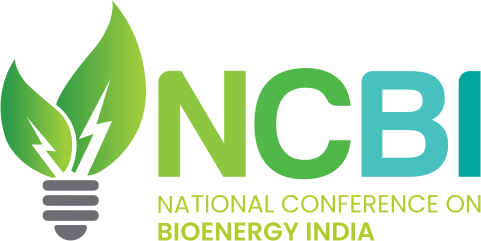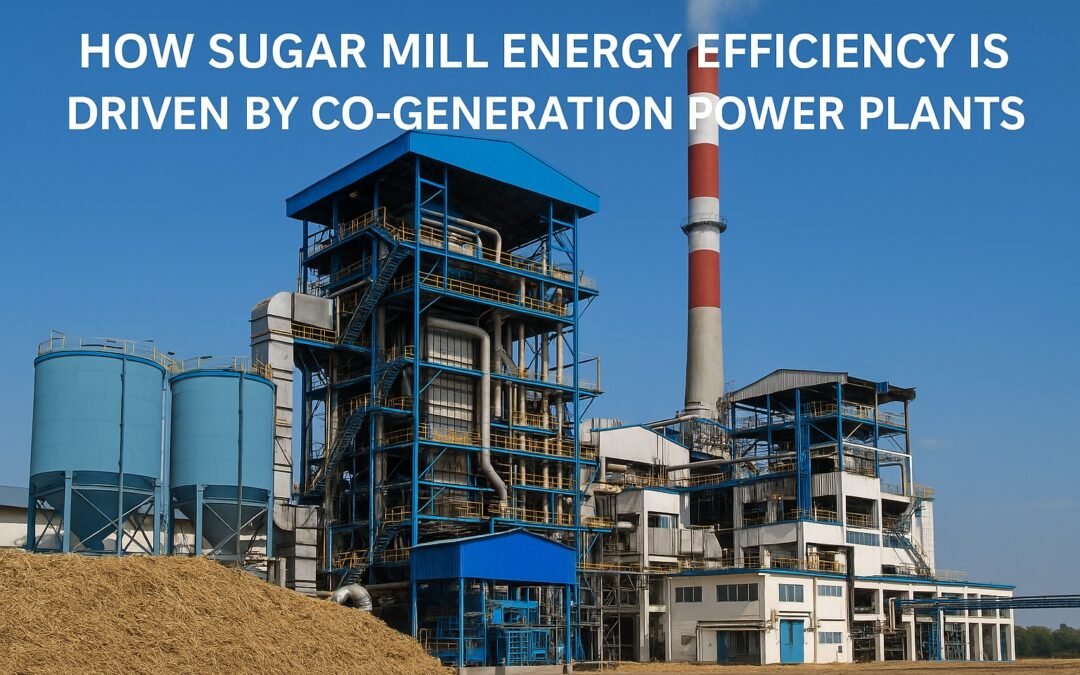Overview
Many nations’ agrarian economies, particularly India’s, rely heavily on the sugar sector. Sugar mills require a lot of energy and have historically relied on fossil fuels for both heating and power. Nonetheless, cogeneration power plants are now at the forefront of sugar mill modernization initiatives due to the move toward sustainable energy policies. These facilities help reduce carbon emissions, manage waste, and save money in addition to increasing energy efficiency. Platforms that promote such cutting-edge technology, such as the biomass and bioenergy conference 2025, the international bioenergy exhibition 2025, and other renewable energy events in India, have gained prominence due to the growing emphasis on renewable energy.
1. Comprehending Sugar Mill Co-Generation
Combined Heat and Power (CHP), another name for co-generation, is the process of producing electricity and useable thermal energy from the same energy source at the same time. Bagasse, the fibrous waste left over after sugarcane is crushed, is the principal fuel source for sugar mills. Bagasse is turned into a useful biofuel for cogeneration systems rather than being thrown away. By using an integrated approach, sugar mills can increase energy efficiency by up to 80% by producing electricity for internal consumption and supplying excess energy to the power grid.
2. Cogeneration Power Plant Mechanics
The following elements make up a typical sugar mill cogeneration plant:
- Boiler: Generates high-pressure steam by burning bagasse.
Thermal energy is transformed into mechanical energy by a steam turbine. - Electric generator: Produces electricity from mechanical energy.
- Heat exchangers: These devices use exhaust steam to heat processes and meet other thermal requirements in the mill.
This method guarantees that every portion of the sugarcane is utilized effectively and lessens the demand for additional fossil fuels.
3. Benefits of Co-Generation for the Environment
The low environmental effect of cogeneration is one of the primary factors driving its adoption. Co-generation, as opposed to conventional energy sources.
- Lowers Greenhouse Gas Emissions: Compared to coal or diesel, using bagasse as fuel lowers CO2 and other emissions.
- Encourages Renewable Energy: Complies with national and international sustainability objectives.
- Cuts Waste: Utilizes agricultural waste items effectively.
When the role of the sugar sector in the production of bioenergy is considered at the biomass and bioenergy conference in 2025, these advantages will be highlighted.
4. Benefits to the Economy and Operations
Adopting co-generation offers sugar mills several financial advantages in addition to environmental ones:
- Energy Cost Savings: Being self-sufficient in energy usage lessens reliance on outside vendors.
- Revenue Generation: Under advantageous power purchase agreements, excess electricity can be sold to the grid.
- Increased Plant Efficiency: Better resource use results from integrated operations.
- Job Creation: Cogeneration plant construction, operation, and maintenance create jobs.
These operational enhancements will probably be presented as case studies from top sugar mills at the international bioenergy expo in 2025.
5. Case Studies: Indian Sugar Mills’ Co-Generation
Cogeneration projects have been successfully established by a number of sugar mills in India.
- As an example, the Balrampur Chini Mills in Uttar Pradesh operate cogeneration facilities that generate excess electricity.
- To increase output, Dhampur Sugar Mills has incorporated energy-efficient boilers and turbines.
- In Karnataka, Shree Renuka Sugars has installed cutting-edge bagasse-based power grid feeding systems.
These case studies demonstrate how cogeneration has changed the sugar industry’s energy usage trends.
6. Implementation Difficulties
Co-generation has drawbacks despite its advantages:
- Initial Capital Investment: Small-scale sugar producers are discouraged by high upfront expenditures.
- Regulatory Barriers: State-level electricity regulations and power grid connectivity may be onerous.
- Gaps in Technology: inadequate technical know-how and limited access to contemporary machinery.
At renewable energy conferences in India, where participants from the public and business sectors look for answers, these issues are vigorously discussed.
7. Support and Policies of the Government
Through a number of programs, the Indian government encourages cogeneration:
- Incentives and Subsidies: capital grants for electricity projects utilizing biomass.
- Policy Frameworks: Power distribution firms are encouraged to purchase energy from renewable sources through Renewable Energy Purchase Obligations (RPOs).
- Funding Sources: grants and loans from organizations such as MNRE and IREDA.
To further encourage business participation, these initiatives will be covered in detail at the 2025 International Bioenergy Exhibition and the 2025 Biomass and Bioenergy Conference.
8. Co-generational technological innovations
The potential of co-generation is being pushed by emerging technologies:
- High-Pressure Boilers: Increase the effectiveness and quality of steam.
- Advanced Turbines: Increase the production of electricity.
Optimize power distribution and load balancing using smart energy management systems. - Hybrid Systems: Combining biomass-based systems with solar and wind power.
These developments show how green technology are developing and are regularly showcased at renewable energy events in India.
9. Cogeneration’s Contribution to India’s Renewable Energy Objectives
By 2030, India wants to have 500 GW of renewable energy capacity. By diversifying the mix of renewable energy sources, cogeneration in sugar mills makes a substantial contribution to achieving this goal.
- Encouragement of electrification in rural areas.
- Lowering reliance on fossil fuels and promoting the circular economy.
The worldwide bioenergy expo 2025 and other comparable events will showcase the importance of co-generation in achieving these national goals.
10. Sugar Mills’ Prospects for Co-Generation
Co-generation in sugar mills appears to have a bright future thanks to legislative backing and technology developments:
- Digital Transformation: Increasing process efficiency using IoT and AI.
- International Cooperation: Information exchange via forums such as the 2025 Biomass and Bioenergy Conference.
- Sustainable Models: Combining carbon capture and ethanol generation technology.
These opportunities guarantee that sugar mills continue to be energy-efficient and contribute significantly to India’s clean energy revolution.
Final Thought
Sugar mills are being transformed into self-sufficient, energy-efficient machines by cogeneration power plants. They are prime examples of sustainable growth and the circular economy by utilizing agricultural wastes like bagasse. Co-generation is poised to emerge as a key component of green industrial practices in India, as seen by the increasing participation in the biomass and bioenergy conference 2025, the international bioenergy exhibition 2025, and other renewable energy events. Co-generation in sugar mills will surely be a major factor in India’s success as it continues its transition to a cleaner, greener future.




